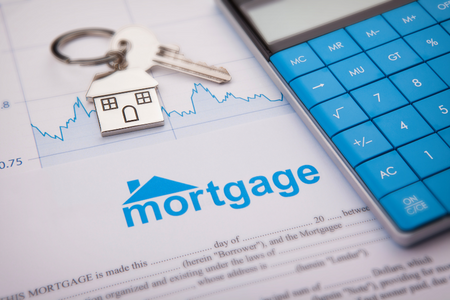
The 50-year mortgage first appeared in southern California, where housing was becoming increasingly costly, and people were looking for new ways to reduce their monthly mortgage payments. Except for the extra two decades to pay off the loan, it works the same as a 30-year fixed mortgage.
The advantage of a 50-year mortgage is the lower payment, but the significantly higher long-term costs may outweigh this advantage. Let’s see if you should go down that long road.
What’s the point of a 50-year mortgage?
Some 50-year mortgages have fixed rates. They are designed to be paid off with consistent payments over 50 years. Adjustable-rate mortgages (ARM) with a term of 50 years are also available. An ARM has a fixed rate for a set period, which can be adjusted regularly for the remainder of the loan term.
The most common reason people take out a 50-year mortgage is to lower their monthly payments. The idea is to spread the mortgage over a longer period so that you can pay less each month than you would with a shorter-term loan.
Your monthly payment will be higher if you use a 15 or 30-year mortgage. Monthly payments may be significantly reduced by extending the loan. A 50-year mortgage lowers your monthly payments, which allows you to borrow more money and buy a larger house than you can afford.
Fifty-year loans with an initial period of only paying interest may also provide more flexibility at the start of your loan term. This can be useful if you deal with the high costs of moving into, furnishing, or repairing a new home.
Disadvantages of 50-year mortgages
You can get a mortgage for as long as 50 years in the US, but these aren’t “qualified” mortgages. Only some lenders are interested in non-qualified mortgages, so your choices would be limited. But this isn’t even the first or second most significant disadvantage of 50-year mortgages.
First and foremost, the total amount of interest paid at the end of the term will be significantly more in the case of a 50-year mortgage. This results from the longer loan term and the higher interest rate combined. All of this leads to 50-year mortgages having a very high total cost compared to a 15 or 30-year mortgage.
Secondly, because the loan term is so long, you’ll accumulate equity at a slower rate with a 50-year mortgage. This can result in a longer-than-usual wait time if you want to refinance, get a home equity loan, or get rid of private mortgage insurance (PMI), all of which require you to meet minimum equity thresholds.
Fifty years in debt is a long time. Even if you buy a house when you are 25, you will only be able to pay it off once you are 75. It will take you a half-century to own the home, and you will also be paying interest on top of the principal amount during this time.
Alternatives to getting a 50-year mortgage
Budgeting is the most effective way to increase your spending power on things that truly matter. Make a monthly budget and eliminate a few luxuries to allow for a 30-year or even a 15-year mortgage. Using the budget correctly will ensure you will avoid having to go into debt for the next 50 years.
An emergency fund is also required because it will cover your expenses in an unexpected financial crisis. Save enough money to last at least a couple of months in case of job loss or injury that prevents you from working. An emergency fund will also help you stay out of debt by providing cash in times of need rather than relying on your credit card or a personal loan.
Managing your debt will also help you keep your monthly expenses low, allowing you to afford a faster and less expensive (in total) mortgage. If you have numerous insecure debts, consider consolidating your debts into a single, more manageable monthly payment. Dealing with all your debts will give you room in your budget for a quicker and overall cheaper mortgage.
Your other options to reduce mortgage payments include the following:
- Saving for a larger down payment.
- Using an adjustable-rate mortgage.
- An interest-only mortgage.
- Buying a less expensive home.
The Bottom Line
Fifty-year mortgages are not new or groundbreaking, and there is a reason why they are not popular. Although they can be helpful for some people looking to buy a house in an expensive housing market, for most of us, it is best avoided.
The lower payments of a 50-year mortgage fail to outweigh its cons. To own a house, you don’t have to go into debt for the next 50 years. There are plenty of ways to take your existing financial situation to a place where you can easily afford a traditional 15 or 30-year mortgage.
About the Author: Lyle Solomon has extensive legal experience, in-depth knowledge, and experience in consumer finance and writing. He has been a member of the California State Bar since 2003. He graduated from the University of the Pacific’s McGeorge School of Law in Sacramento, California, in 1998 and currently works for the Oak View Law Group in California as a principal attorney.
